Tired of Dealing With Thunder Thighs? Here’s How You Can Get Rid of Them!
If you are tired of dealing with stubborn thunder thighs and want a more permanent solution, consider consulting with a cosmetic surgeon to discuss surgical options such as liposuction or a thigh lift procedure. These surgical solutions can help address excess fat and sagging skin on the thighs, giving you a more contoured and toned appearance.
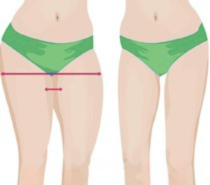
During your consultation, be sure to discuss your weight loss goals and overall body contouring needs with the cosmetic surgeon. They can help determine the best approach for addressing your thunder thighs while taking into consideration your desired results and overall health.
A liposuction is a popular option for targeting isolated areas of fat on the thighs, while a thigh lift can help address excess skin and tissue, especially if weight loss has resulted in loose, sagging skin. Your cosmetic surgeon will evaluate your individual needs and goals to determine the best treatment plan for achieving the results you desire.
By working closely with a cosmetic surgeon, you can take a proactive step towards addressing thunder thighs and achieving a more confident, toned appearance through effective weight loss and body contouring procedures.
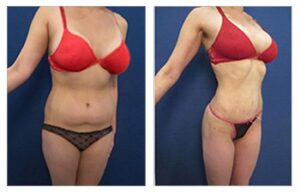
What are thunder thighs?
Thunder thighs is a colloquial term used to describe large or muscular thighs, typically about women. This term is often used in a derogatory manner, associating the size of a person’s thighs with being overweight or out of shape. However, it’s important to note that having “thunder thighs” does not necessarily indicate poor health or fitness.
Many athletes and individuals with strong, muscular legs may also be labeled as having “thunder thighs.” Ultimately, the term is subjective and can be harmful when used to shame or ridicule individuals based on their body shape or size. It’s essential to promote body positivity and self-acceptance, regardless of one’s physical appearance.
Are Thunder Thighs Genetic?
Thunder thighs can be influenced by a combination of genetic and lifestyle factors. Genetics plays a significant role in determining fat accumulation in the thigh area. Some individuals may have a genetic predisposition to storing more fat in their lower body, contributing to the appearance of “thunder thighs”. Additionally, lifestyle influences such as diet and physical activity level can also contribute to fat accumulation in this area.
When it comes to fat loss in the thigh area, genetics also play a role. Some individuals may find it more challenging to lose fat from their thighs due to their genetic makeup. However, with a consistent and long-term workout and nutritional regimen, it is possible to address the issue of thunder thighs. Regular exercise that includes strength training and cardiovascular activity, combined with a balanced diet, can help reduce fat in the thigh area. It’s important to note that spot reduction is not possible, so overall body fat reduction is necessary to see a difference in the thigh area.
In conclusion, while genetics can influence fat accumulation and loss in the thigh area, long-term lifestyle changes, including regular exercise and a healthy diet, are essential for addressing the issue of thunder thighs.
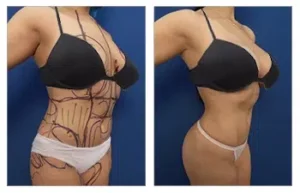
A Proper Diet and Exercise Regimen
To create a proper diet and exercise regimen for reducing excess fat in the thighs, it is essential to achieve a caloric deficit. This means consuming fewer calories than needed to maintain weight. Start by tracking your current calorie intake and gradually reduce it by 500-1000 calories per day. Make responsible food choices by focusing on high-volume foods that are low in calories, such as fruits, vegetables, lean proteins, and whole grains. These foods will help you feel full and satisfied while consuming fewer calories.
Incorporate cardiovascular exercises into your routine, such as running, cycling, or swimming. Aim for at least 150 minutes of moderate-intensity cardio per week to burn calories and reduce overall body fat, including in the thighs. Additionally, include strength training exercises that target the thighs, such as squats, lunges, and leg presses to build muscle and improve the overall appearance of the thighs. By following a healthy diet and regular exercise routine, you can achieve a caloric deficit and reduce excess fat in the thighs, leading to a more toned and slim lower body.
How are thunder thighs corrected?
When it comes to correcting “thunder thighs,” there are a few different approaches that can be effective. Through a combination of targeted exercise, a balanced diet, and lifestyle changes, it is possible to reduce excess fat and build muscle in the thighs. From focusing on specific leg and glute exercises to incorporating cardio and overall strength training, there are numerous ways to address this common concern.
Additionally, making dietary adjustments and prioritizing a healthy, balanced eating plan can also play a significant role in slimming and toning the thighs. It’s important to remember that everyone’s body is different, and what works for one person may not work for another, so it’s essential to approach “thunder thighs” correction with patience, persistence, and a personalized plan.
Liposuction of big thighs
Closed aspiration lipoplasty, also known as liposuction, is a surgical procedure commonly used for women with “thunder thighs” to remove excess fat from the thighs. It involves making small incisions in the skin and using a cannula to suction out the unwanted fat. The outcomes of this procedure include a more defined and slimmer thigh appearance.
However, dissatisfaction and potential complications may occur. Dissatisfaction can arise if the patient’s expectations are not realistic or if the results are not as expected. Complications such as infections, excessive bleeding, uneven contours, and skin irregularities may also occur.
Considerations for candidacy include being at a stable weight, having good skin elasticity, and being in good overall health. The potential risks of liposuction for larger thighs include an uneven or bumpy appearance, changes in skin sensation, and the possibility of needing revision surgery. Benefits may include increased self-confidence and improved body proportions.
Alternative treatments or modifications to liposuction for addressing the specific concerns of women with larger thighs may include non-surgical procedures such as cryolipolysis or radiofrequency treatments. These alternatives may have fewer associated risks and may be more suitable for individuals with milder cases of excess fat in the thighs.
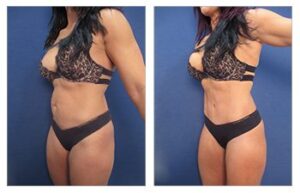
Benefits of thigh liposuction
Thigh liposuction offers numerous benefits for those looking to improve the appearance of their thighs. This procedure can effectively target isolated pockets of fat in the upper legs, helping to create a slimmer and more contoured overall appearance. For individuals struggling with “thunder thighs,” thigh liposuction can provide a solution by removing stubborn fat deposits and improving the shape of the thighs.
When combined with a thigh lift, thigh liposuction can further enhance the results by tightening and sculpting the skin, resulting in a more toned and youthful upper leg contour. This combination procedure can have a dramatic impact on the appearance of the thighs, providing a solution for individuals who are unhappy with excess fat and loose skin in this area.
It is important to note that thigh liposuction is not a weight loss procedure and is best suited for individuals who have already reached a healthy weight through diet and exercise. The procedure is intended to target specific areas of fat that are resistant to traditional weight loss methods and can help individuals achieve their desired body contour. Overall, thigh liposuction offers the potential for significant improvement in the appearance of the thighs, leading to a slimmer and more confident self.
Disadvantage of thigh liposuction
Thigh liposuction, while popular among women looking to reduce the size of their thighs, has several disadvantages. Firstly, many women report dissatisfaction with the results of thigh liposuction, as the procedure may not always achieve the desired slimming effect, especially for those with significant amounts of excess fat in the thigh area. This can lead to disappointment and a negative impact on self-esteem.
Moreover, thigh liposuction is not a weight-loss procedure and is not suitable for those looking to shed a significant amount of weight. It is more appropriate for individuals who are near their ideal weight but struggle with localized areas of fat, such as “thunder thighs”. This limitation may not meet the expectations of those hoping for a more overall slimming effect.
There are also potential risks and complications associated with thigh liposuction, including infection, hematoma, seroma, nerve damage, and uneven skin contour. Additionally, the procedure may result in scarring, pigmentation changes, or asymmetry in the treated area.
Overall, it is important for individuals considering thigh liposuction to carefully weigh the potential drawbacks and limitations of the procedure before undergoing it.
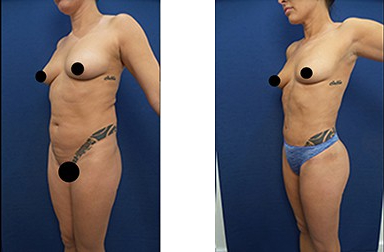
Renuvion of big thighs
Renuvion is a minimally invasive procedure that can help reduce the size of big thighs and improve overall thigh appearance. The benefits of Renuvion include its ability to tighten and firm the skin, reduce excess fat, and contour the thighs. By using a combination of radiofrequency energy and helium plasma, Renuvion can effectively target and treat areas of concern, leading to a smoother and more sculpted thigh contour.
Before and after photos of patients who have undergone Renuvion treatment showcase the potential results, demonstrating the reduction in thigh size and improved skin tightness. These photos serve as visual evidence of the efficacy of Renuvion in addressing big thighs and enhancing overall thigh appearance.
With its ability to tighten skin, reduce fat, and contour the thighs, Renuvion offers a comprehensive solution for individuals looking to improve the appearance of their thighs. Whether it’s excess fat, loose skin, or lack of definition, Renuvion can help address these concerns, leading to a more toned and shapely thigh appearance.
Benefits of thigh Renuvion
Thigh Renuvion is a revolutionary technology that offers numerous benefits in cosmetic procedures for the thighs. It effectively targets and reduces sagging skin, leading to significant improvement in overall skin tightness. The advanced technology of Renuvion utilizes helium plasma and radiofrequency energy to precisely tighten and rejuvenate the skin without causing any damage to the surrounding tissues.
One of the key advantages of thigh Renuvion is its ability to provide long-lasting results. The collagen production stimulated by the treatment helps to maintain the improved skin tightness over a prolonged period, reducing the need for additional touch-up procedures. This means that patients can enjoy the benefits of thigh Renuvion for an extended period of time without the frequent need for repeat treatments.
Overall, thigh Renuvion offers a safe and effective solution for individuals seeking to address sagging skin and enhance the tightness of their thighs. With its ability to deliver long-lasting results, it is a highly beneficial option for those looking to achieve a more toned and youthful appearance in the thigh area.
Disadvantage of thigh Renuvion
Risks and potential disadvantages of using Renuvion for thigh procedures include the possibility of burns, nerve injury, and post-operative complications. When Renuvion is used on the thigh area, there is a higher risk of burns due to the thin and delicate skin in this region. Additionally, the proximity of nerves in the thigh area makes it more susceptible to nerve injury during the procedure.
These risks can lead to post-operative complications, such as pain, numbness, or tingling sensations in the thigh, which can significantly impact patient outcomes. Furthermore, the potential for burns and nerve injury can result in longer recovery times and the need for additional treatments to manage these complications. It is important for patients to be aware of these specific concerns when considering Renuvion for thigh procedures, as they can have a significant impact on the success and safety of the treatment.
Introducing the Thigh Lift for Thick Legs
Performing a thigh lift on individuals with thick legs requires specific considerations and techniques. The challenge lies in the excess skin and isolated pockets of fat that are common in this body type. The potential benefits of the procedure include achieving a more contoured and toned appearance.
The thigh lift can effectively address concerns such as excess skin and isolated pockets of fat by removing the excess skin and reshaping the underlying tissue. However, it is crucial for individuals with thick legs to reach a healthy weight before considering surgery to minimize risks and ensure optimal results.
During the procedure, the surgeon will carefully sculpt and contour the thighs to create a more proportionate and balanced appearance. Emphasizing the importance of maintaining a healthy weight post-surgery is also essential for long-term success.
In conclusion, a thigh lift can be a beneficial solution for individuals with thick legs who are struggling with excess skin and isolated fat. However, it is crucial to prioritize reaching and maintaining a healthy weight before undergoing the procedure.
Disadvantage of thigh lift
A thigh lift procedure, while effective in addressing excess skin and fat in the thigh area, comes with potential disadvantages and risks. One of the main concerns is the risk of scarring, as the surgery involves incisions along the inner thigh or around the hip area, which may result in visible scars.
Additionally, the healing time can be lengthy, and there is the possibility of complications such as infection, blood clots, or poor wound healing. Some patients may also experience dissatisfaction with the results, especially if there is asymmetry or an unnatural appearance to the thighs. Furthermore, there is a potential need for additional surgeries to address any complications or to achieve the desired outcome.
A study on patient dissatisfaction with closed aspiration lipoplasty for “thunder thighs” found that some participants were unhappy with the results due to a lack of significant improvement in thigh contour and shape. These findings highlight the importance of managing patient expectations and considering the potential risks and drawbacks of thigh lift procedures.
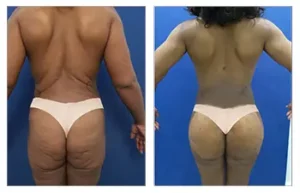
Benefits of thigh lift
A thigh lift offers numerous benefits, including the slimming of thighs and legs by removing excess skin and fat. This procedure also helps to achieve a more sculpted contour, especially when combined with liposuction. Additionally, a thigh lift can improve overall body proportions and boost self-confidence.
It’s important to note that a thigh lift is not a weight loss procedure. Patients should reach a healthy weight before considering surgery. This will ensure the best results and reduce the risk of complications during and after the procedure. Maintaining a stable weight will also help sustain the positive outcomes of the thigh lift in the long term.
For instant fat removal and sculpting, Front Thigh AirSculpt® by Elite Body Sculpture is a minimally invasive procedure that targets specific areas and delivers immediate results. The advanced technology ensures a quicker recovery time and minimal scarring, providing patients with a more comfortable and effective solution for thigh slimming and contouring.
What to Expect from Thick Leg Surgery
Thick leg surgery, also known as thigh lift surgery, is a surgical procedure performed to remove excess skin and tissue from the thighs, resulting in a more toned and sculpted appearance. The surgery is typically performed under general anesthesia to ensure the patient’s comfort and safety. The surgeon will make incisions in strategic locations, usually along the groin crease or inner thigh, to access the underlying tissue. Excess skin and tissue are then removed, and the remaining skin is carefully repositioned and sutured for a smoother, more contoured appearance. In some cases, simultaneous liposuction may also be performed to further sculpt the thighs.
At Aesthetic Arts Institute of Plastic Surgery, thick leg surgery is typically performed on an outpatient basis, allowing patients to return home the same day of the procedure. This minimizes disruption to their daily lives and facilitates a quicker recovery.
Potential benefits of thick leg surgery include improved body proportion, increased self-confidence, and enhanced comfort in clothing. However, it is important to be aware of the potential risks, such as scarring, infection, and asymmetry, which will be thoroughly discussed during the pre-operative consultation.
Overall, thick leg surgery can be a rewarding procedure for individuals seeking to address excess skin and tissue in the thigh area, but it is essential to weigh the potential benefits and risks before making a decision.
Recovery following surgery for thunder thighs
Following surgery for thunder thighs, the recovery process includes post-operative care to ensure a smooth healing process. Patients should expect some discomfort and swelling, which can be managed with prescribed pain medication and by following the surgeon’s instructions for rest, elevation, and compression. Potential complications may include infection, blood clots, or delayed wound healing, so it is important to keep the surgical site clean and monitor for any abnormal symptoms during the recovery period.
The expected timeline for returning to normal activities will depend on individual healing rates, but patients can typically resume light activities within a week and gradually increase their level of physical activity over the following weeks. It is crucial to follow the surgeon’s guidance on when to resume exercise and vigorous activities to prevent any complications.
Maintaining the results of the surgery involves a balanced diet and regular exercise regimen. A diet rich in lean protein, healthy fats, and complex carbohydrates can support muscle recovery and promote a toned appearance. Incorporating strength training and cardiovascular exercises can also help maintain the surgical results and improve overall muscle tone.
By adhering to post-operative care instructions, maintaining a healthy diet, and following a customized exercise regimen, patients can achieve successful recovery and maintain the results of thunder thigh surgery.
Conclusion: Thunder Thighs
In conclusion, thunder thighs can be affected by a combination of genetics, weight, and body proportions. Genetics plays a significant role in determining where our bodies store fat, while weight and body proportions can also influence the appearance of larger thighs. Effective strategies for reducing the appearance of thunder thighs include targeted exercises that focus on toning and strengthening the thigh muscles, as well as maintaining healthy eating habits to reduce overall body fat. It is important to consider individual body types and lifestyle choices when addressing this issue, as what works for one person may not work for another.
Taking into account these factors can help individuals create a personalized approach to reducing the appearance of thunder thighs and achieving their desired body shape. By incorporating targeted exercises, healthy eating habits, and considering individual body types and lifestyle choices, individuals can work towards reducing the appearance of thunder thighs and improving their overall health and confidence.

